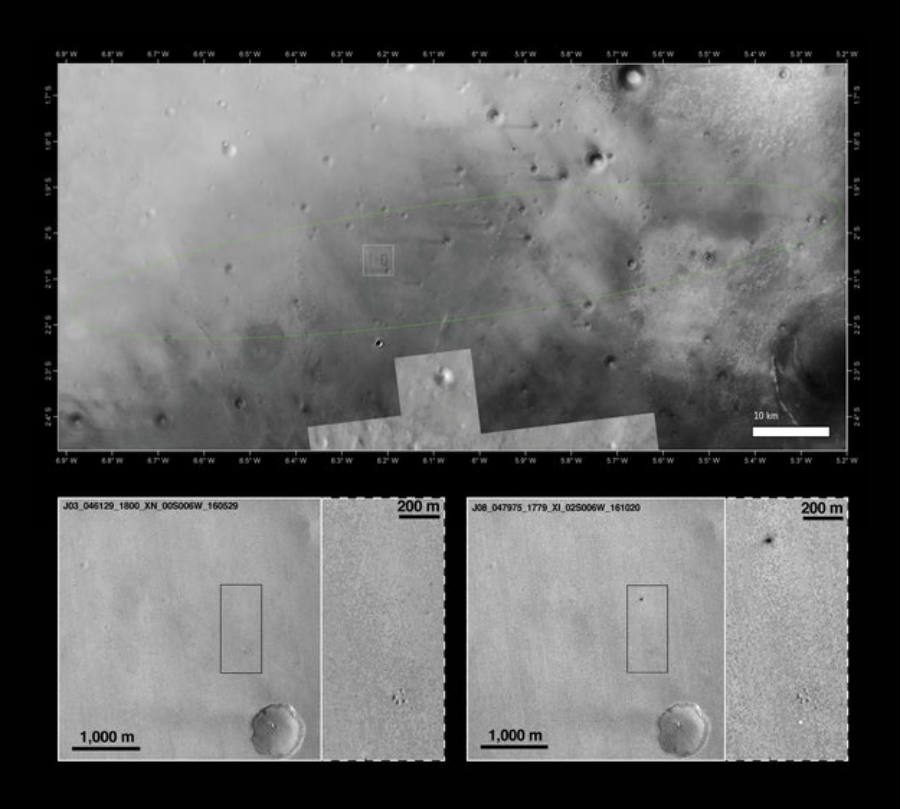The European Space Agency (ESA) published an article containing a new set of photographs of the surface of Mars. Markings found on the pictures could potentially be the wreckage of the Schiaparelli Mars module, which crashed on October 19.
The photos come from NASA’s Mars Reconnaissance Orbiter and show a black spot right at the place where ESA scientists were expecting Schiaparelli to land, along with a bright spot that could be its parachute which deployed too late to stop the impact.
The spacecraft suffered a malfunction in its thrusters that prompted them to turn off earlier than expected, thus causing it to free fall from a high altitude into the surface of the Red Planet.
The Schiaparelli hit the Martian surface at 186 mph

The CTX low-resolution camera installed in the MRO took pictures of Mars’ Meridiani Planum yesterday, October 20. Scientists compared the photos to others taken at the same spot earlier this year in May, to confirm that something had changed on the planet’s surface.
There is a bright spot consistent with the 12m-diameter parachute and a dark, round spot that measures about 15 meters wide and 40 meters long and sits at about one kilometer from the parachute above.
Scientists estimate that Schiaparelli started falling from an altitude of between 2 and 4 kilometers (approximately 6,500 to 13,000 feet), impacting the ground at speed greater than 300 km/h (186 mph).
That kind of impact would explain why the crash site is so large, as debris would have scattered on the surface, following the probe’s explosion.
A timeline of Schiaparelli’s descent into Mars
An official press release by the ESA published last Wednesday revealed scientists had lost contact with the module only moments before its normal landing. It successfully detached from its parent spacecraft, the Trace Gas Orbiter (or TGO) on October 16.
Schiaparelli’s programming allowed it to land automatically on October 16. The last known interaction between the module and the Giant Metrewave Radio Telescope (GMRT), located near Pune, India, occurred at 2:42 p.m. (GMT).
The lander began transmitting a ‘beacon signal,’ intended to show that it was still functioning properly, at approximately 75 minutes after it successfully reached the Martian atmosphere.
Some time after that event, however, the signal was lost. Further attempts to reestablish contact were unsuccessful, the latest development being the pictures that confirm the crash.
The TGO received a significant portion of Schiaparelli’s recorded engineering data before it ultimately crashed. ESA scientists are now analyzing it to learn more about what happened.
Source: European Space Agency



